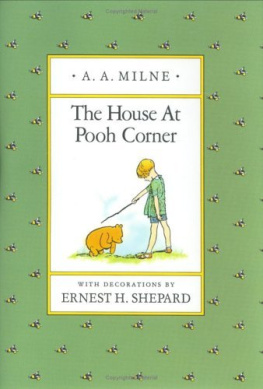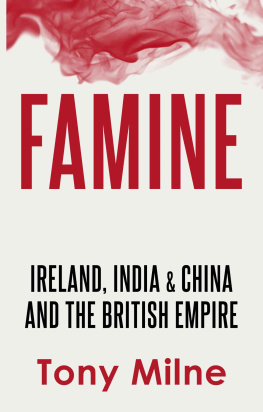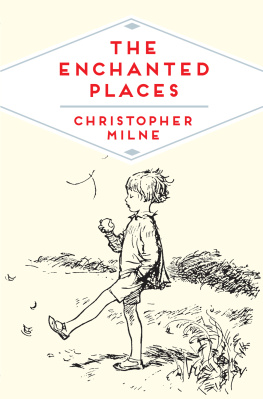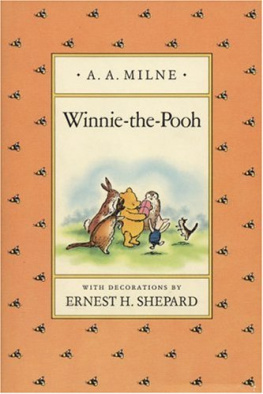
The Complete Works of
A. A. MILNE
(1882-1956)

Contents

Delphi Classics 2021
Version 1


Browse our Main Series

Browse ou r Ancient Classics

Browse our Poets

Brow se our Art eBooks

Browse our Classical M usic series

The Complete Works of
A. A. MILNE

By Delphi Classics, 2021
COPYRIGHT
Complete Works of A. A. Milne

First published in the United Kingdom in 2021 by Delphi Classics.
Delphi Classics, 2021.
All rights reserved. No part of this publication may be reproduced, stored in a retrieval system, or transmitted, in any form or by any means, without the prior permission in writing of the publisher, nor be otherwise circulated in any form other than that in which it is published.
ISBN: 978 1 80170 013 9
Delphi Classics
is an imprint of
Delphi Publishing Ltd
Hastings, East Sussex
United Kingdom
Contact: sales@delphiclassics.com

www.delphiclassics.com

Our comprehensive editions are beautifully illustrated with the original artwork of some of the greatest children stories ever told, as well as offering a dazzling array of Delphi bonus features. Now you can rediscover the magic of these eternal classics on your eReader!
Explore Classic Chil drens eBooks

The Novels

Kilburn, north west London, c. 1880 A. A. Milne was born in Kilburn in 1882

Site of the birthplace Milne was born and spent his youth in a private house situated here, which was later demolished and replaced by a Council Estate.
Once on a Time (1917)

ILLUSTRATED BY CHARLES ROBINSON
Milnes first novel was written in 1915 for the amusement of my wife and myself at a time when life was not very amusing; with World War I in full flow he had been commissioned into the 4 th Battalion Royal Warwickshire Regiment as a second lieutenant on 1 February that year with his commission being confirmed on 20 December. The book itself was published in November 1917 by Hodder & Stoughton in the UK, with illustrations by H. M. Brock. An American edition was published in 1922 by Grosset and Dunlop.
Its a fairy tale: the King of Barodia acquires a pair of Seven League Boots as a birthday present and hops, eighteen times, over the breakfast table of the King of Euralia, which leads to conflict. King Merriwig of Euralia has his own problems however, for he has gotten himself into a bit of a mess, promising the hand of his daughter, Princess Hyacinth and half the kingdom, to seven different princes. And then theres the Countess Belvane, the villain of the piece, who wants to marry the King
Once on a Time was greeted with unanimously positive reviews; the New York Herald , calling it a joyous tangle of adventure, describing it as Hans Anderson without any pathos or moralising and their final paragraph summed it up nicely; Mr Milne has no solemn purpose, no axe to grind and does not care a bit for anything, but the pure joy of telling a story. And such a book is a treasure nowadays. The New York Tribune struck a similar note calling it a whimsical tale behind which no stern purpose lurks. There are no crouching moral truths between its covers; there are no acidulous flecks of social satire on its pages; there are no higher principles to be served in its whimsies. The author wrote this book to amuse and to entertain and it does both in charming fashion.

The first edition

The original frontispiece
CONTENTS

The first editions title page

PREFACE

T HIS BOOK WAS written in 1915, for the amusement of my wife and myself at a time when life was not very amusing; it was published at the end of 1917; was reviewed, if at all, as one of a parcel, by some brisk uncle from the Tiny Tots Department; and died quietly, without seriously detracting from the interest which was being taken in the World War, then in progress.
It may be that the circumstances in which the book was written have made me unduly fond of it. When, as sometimes happens, I am introduced to a stranger who starts the conversation on the right lines by praising, however insincerely, my books, I always say, But you have not read the best one. Nine times out of ten it is so. The tenth takes a place in the family calendar; St. Michael or St. Agatha, as the case may be, a red-letter or black-letter saint, according to whether the book was bought or borrowed. But there are few such saints, and both my publisher and I have the feeling (so common to publishers and authors) that there ought to be more. So here comes the book again, in a new dress, with new decorations, yet much, as far as I am concerned, the same book, making the same appeal to me; but, let us hope, a new appeal, this time, to others.
Next page

































